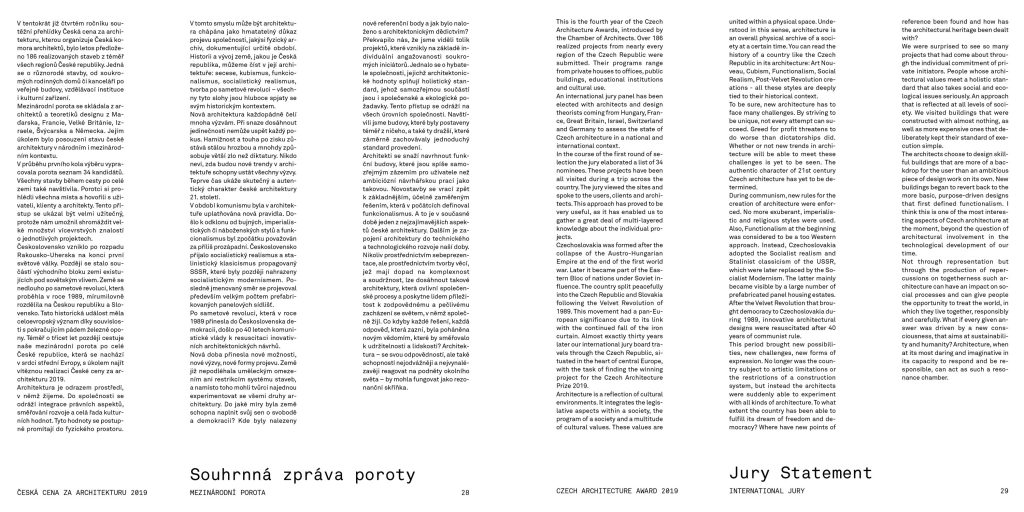Texts
The Architectural Fragment as Space between Environment and Society
On the topos of the fragmentary in architecture exemplified by Ludwig Mies van der Rohe’s New National Gallery Berlin.
Read the text (PDF)
Lecture by Imke Woelk at the symposium ‘fragmental_ on the dissolution of public space’ at German Academy Villa Massimo Rome, initiated by Heike Hannada, TU Dortmund
February 2022
Will we manage the transformation of the building sector?
The KAP Forum is investigating this central question and demand regarding the future of construction and has interviewed planners and construction professionals in Germany.
To the article (PDF) (Original version)
Imke Woelk interviewed by Andreas Grosz from KAP-FORUM Cologne
May 2022
The Tiefgarten
From the visit to the New National Gallery Berlin, and the preservation and restoration whose criteria are shifting.
To the article (PDF) (Original version)
A comment by Imke Woelk in bauwelt 09.21. Here, she draws her own astonishing summary of the restoration work that has been done, based on an exemplary examination of one detail of this prominent building.
April 2021
The Tempelhofer Feld as a nature reserve
A conversation with architect Imke Woelk about climate protection, ecological building and a future city on the A24 Hamburg-Berlin highway.
To the interview (PDF)
Interview in the Berliner Zeitung on the occasion of the exhibition ‘Human Scale Remeasured – New spatial requirements, societal demands and economic values in architecture’ at Aedes Architecture Forum Berlin. The conversation was conducted by Elena Matera.
February 2021
And no one is asking: Do you even want that?
Why is urban redensification so complicated? How can resources and green spaces be conserved? Why is architecture not part of the educational program? A conversation with the architect Imke Woelk about necessary changes and her visionary concept for urban growth corridors within natural spaces.
Read the whole interview (PDF)
Interview by Tom Mustroph in taz. die tageszeitung. To mark the presentation of 15 projects by international architects and planners on environmental sustainability, social justice and economic feasibility at Galerie Aedes, Berlin.
January 2021
Letter to the Mayor, Berlin
What would it be like to initiate a project that brings together a variety of the questions that need to be solved in this city in a project on Tempelhofer Feld and that works in a very concrete way to build a resilient city?
The entire letter (PDF)
Open letter to the Governing Mayor of Berlin in the context of the global project ‘Letters to the Mayor’. Storefront for Art and Architecture, New York and German Center for Architecture (DAZ) Berlin
November 2019
Architecture Can Act as a Resonance Chamber
What if every spatial response was driven by a new consciousness that aims for sustainability and humanity? Not through representation, but through the mediation of togetherness, architecture can have an impact on.
The complete statement (PDF)
Jury Statement, in: Czech Architecture Award 2019, edited by the Czech Chamber of Architects, Prague
October 2019
Berlin Common Archipelagos
‘Berlin – Common Archipelagos’ is a response to the contemporary discussion on the relationship between the city and the environment by building ‘urban landscapes’. It offers alternative hybrid spaces of urban density, adaptable large-scale structures embedded in geological formations in nature.
The whole contribution (PDF)
in: Learning from Berlin – The large-scale structure as urban generator, edited by Roger Riewe, Sorana-Cornelia Radulescu and Armin Stocker, TU Graz
May 2019
A Different Nature
On architecture, its ability to represent and the questionable relationship between humans and animals. A text on the re-use of the Bärenzwinger (bear pit) in Berlin.
The complete text (PDF)
in: Bärenzwinger Berlin – Trace, Architecture, Projections, edited by District Office Berlin-Mitte, Department of Art and Culture, Dr. Ute Müller-Tischler
March 2019
Garden Home – Potential for Inner-City Redensification
A transformation of existing allotment garden colonies activates urban resources. In the most spatially reduced form, living and working in one’s own house with garden becomes possible. The result is a supplement and green alternative to the existing residential typologies of the Berlin metropolis.
The complete contribution in the book Rurbane Landschaften by Transcript Verlag (PDF)
in: Rurbane Landschaften (“Rurban” landscapes), perspectives of the rural in an urbanized world, edited by Sigrun Langner and Maria Frölich-Kulik, Rurale Topografien, Ed. 7, Weimar (Transcript Verlag)
November 2018
Specific Practical Value of a Universal Space (Arch+ Feature 70)
Imke Woelk wrote a dissertation on exhibiting art in the glass hall of the New National Gallery in Berlin. Here she explains why Ludwig Mies van der Rohe created a democratic, threshold-free space for it.
The entire Arch+ Feature (PDF)
Arch+ Feature 70, in: ARCH+ 230: Project Bauhaus 2: Architectures of globalization, edited by: Nikolaus Kuhnert, Anh-Linh Ngo, Günther Uhlig, Berlin
December 2017
Garden Home – The Potential of Allotments for Redensifying the Inner City (Arch+ 225)
How can residential space for 50,000 households in the immediate proximity of Berlin’s city center be created by just a small change in the law? “Garden home” shows how the enormous potential of allotment colonies can be developed without destroying their small-scale structure. All that is needed is a change in the mindset of the new residents.
The whole article in Arch+ 225 (PDF)
in: ARCH+ 225: Legislating Architecture – Gesetze gestalten!, edited by: Arno Brandlhuber, Tobias Hönig, Anh-Linh Ngo, Nikolaus Kuhnert, Berlin
June 2016
Why Drawings?
Imke Woelk on drawing as a tool of understanding, ordering and spatial mapping. The text accompanies the exhibition catalog of the series “Katsuras Räume” (Katsura Spaces), in which she elaborates on the different levels of openness of the Japanese Villa Katsura, a building ensemble with accompanying gardens from the 16th century.
The entire text (PDF)
in: Imke Woelk, Katsuras Räume – Drawings, Edited by Dr. Peter Dittmar, Galerie Dittmar Berlin
June 2011

